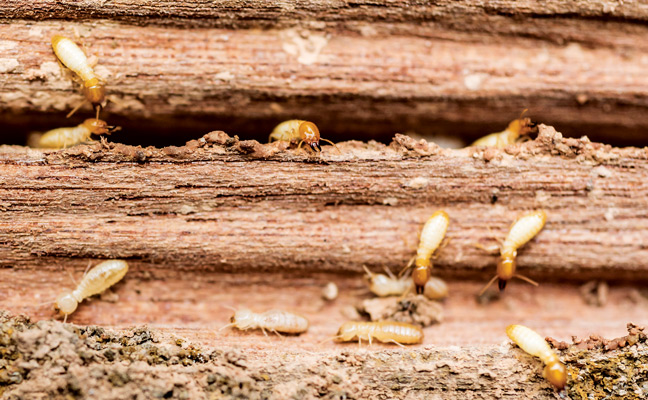
PHOTO: iStock.com/viiwee
We asked Pest Management Professional‘s columnists and editorial board members what they thought the most challenging aspect of termite control is and how they work to overcome it. Here are some of their responses — including a few extra that didn’t make it into our January print edition.
Stuart Aust: You could do everything correctly with a treatment, but could still end up in litigation if a homeowner opens up the walls and there is damage. Good inspections and yearly follow-ups, drawing a graph, documenting where damage is located and taking photos of such, will help overcome this.
Judy Black: I spoke with Randy Piggot, manager of our termite division, and he notes that for liquid treatments, it’s important to understand the construction of the building so you are able to do a thorough treatment. For bait treatments, it’s important to locate your stations during services after the installation. They get moved, destroyed, landscaped over, etc.
Ryan Bradbury: Today’s treatment products have improved so much that the service becomes extremely simple. That’s great until there is a need to problem-solve. As technicians trained in the 1980s and 1990s have moved to management or retirement, we are losing folks with expertise that is sorely needed for training the new generation. Where you drill is as important as what materials you apply.
Michael Broder: Not questioning the homeowner, or measuring properly to see whether an extension was added to a home. Many extensions do not have a basement, and that can affect treatment. Working in New York City, we are unable to simply pull in to a driveway for treatments. We have to make all our equipment, including rigs, portable.
Doug Foster: Working with the different types of building construction, including room additions and garage conversions into rooms. Communicating and working closely with homeowners and contractors will get you access to previously inaccessible/hidden areas to apply proper treatment.
Dr. Austin Frishman: Getting the salesperson and technician to understand construction before using cookie cutter chemical applications.
Paul Hardy: Taking into consideration that the most costly part of termite control is the failure to locate the initial and/or previous infestation on the initial inspection and indicating it on the inspection report. The thoroughness of the inspection and documentation is the most important part. Controlling termites is very easy with the technologies available today.
Brian Lunsford: Termites often give no clear indication of infestation. Thorough inspections that include a full assessment of conducive conditions will go a long way in keeping these cryptic wood-destroyers at bay.
Dr. Doug Mampe: Figuring out construction that is not “normal” and determining how to treat it appropriately.
Dr. Faith Oi: Doing the math correctly to calculate the amount of liquid termiticide needed to treat a site, to which many clever PMPs will say they will install baits instead. Recognizing building construction elements, starting with the slab type on an existing structure, and understanding how subterranean termites exploit those elements to enter. The solution? Webinars, lectures and reference manuals are needed as components of education; however, the most effective solution is to combine these methods with hands-on field training of salespeople, technicians and office staff in charge of scheduling. Education and training must be continual, not a once-and-done.
Kurt Scherzinger: Think like the termite while using the treatment methods. You need to investigate the areas where termites are more prone to attack the structure and turn your focus there.
Pete Schopen: In Northern Illinois and Southeastern Wisconsin, it’s the consistency of the work that is challenging. I have found termites as far north as Racine, but you might only get two or three calls per year. There is quite a bit of termite activity in Chicago, but the competition can be cutthroat. Because of these factors, we do not provide termite services.
Mary Vongas: Getting the customer to be accepting and patient for the results. Communicating the treatment details several times, in several ways, helps lessen the “calm the customer” callbacks.
from Pest Management Professional https://www.mypmp.net/2019/01/08/overcoming-termite-control-challenges/
Sacramento CA
No comments:
Post a Comment